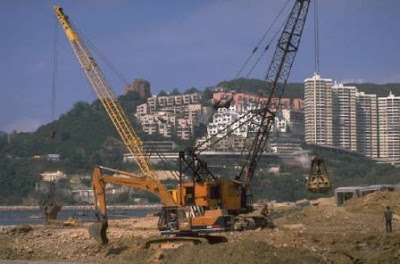Our forecast for India's construction industry
remains positive as the government continues to promote ambitious expansion
across all sectors, backed by policy reform. Manufacturing, transport, energy
and real estate will be key areas of growth throughout our forecast period,
given their importance in boosting overall economic growth. Persistent
regulatory challenges - including high levels of bureaucracy and the complex
web of administrative bodies - will act as a deterrent to potential investors
given the risks to project execution and exposure to corrupt practice.
Latest Updates & Structural Trends
- India's construction industry will record steady growth over the next 10 years, expanding 6.8% in real terms in 2016 and averaging annual growth 6.7% over five years and 6.4% over our forecast period to 2025.
- The non-residential sector, driven by the high demand for office space and the importance of manufacturing for overall economic growth, will post the highest growth throughout this period.
- The need for intermodal transport across the country, to improve freight logistics and the overall ease of doing business, will drive investment in the transport sector (particularly road and rail), forecasted to expand 7% over 2016. Also improving operational risk is the drive to diversify the power supply.
- We now expect the contentious Land Acquisition Bill - which has failed to pass through parliament - could gain traction across the country if it receives significant support from state governments. The bill would provide an upside to the construction industry by removing barriers to project completion.
For
more information Visit at: http://www.marketresearchreports.com/business-monitor-international/india-infrastructure-report-q2-2016
Growth in Oman's construction industry will come
primarily from investment in transport infrastructure projects and the
government's push for public-private partnerships to mobilise private
investment into the construction sector. This will become increasingly
important as global oil prices remain low, curbing government spending.
Latest Updates And Structural Trends
- We have revised down our construction industry growth forecast for Oman in 2016 from 3.9% to 2.41% in real terms, reflecting the negative impact of sustained low oil prices. Our Oil & Gas team again revised downwards its Brent oil price forecast this quarter, forecasting Brent to average USD40 per barrel (bbl) in 2016, after an average of USD97.2/bbl in the last five years.
- The government's push for public-private partnerships (PPPs) will be key to increasing private sector investment in infrastructure and this is critical for the country's future economic development, given the new oil price environment.
- We forecast gross fixed capital formation (GFCF) to average 4.6% over the next five years, compared to the 7.9% in the last five years. This difference reflects our more moderate construction industry growth forecast in the short-to-medium term.
- Oman's transport sector has been experiencing significant expansion and this is set to continue - following the government announcement in October 2013 the country will spend over USD50bn in infrastructure projects over the next 15 years. From this budget, USD20bn is earmarked for the transport sector - including Oman National Railway - which is where we see the strongest pipeline of projects. Particular opportunities lie in the development of the country's road and railway network.
- The Omani government's anti-corruption campaign has been extensive by Gulf standards and will continue in the years ahead. These efforts will strengthen the sultanate's business environment, attracting private investment in the construction industry.
For
more information Visit at: http://www.marketresearchreports.com/business-monitor-international/oman-infrastructure-report-q2-2016
We have downgraded our growth forecast for South
Korea's construction sector on the back of new mortgage rules from early 2016,
which will dampen the residential construction market from 2016 onwards. With a
struggling non-residential building sector, it is the infrastructure sector,
and notably the energy and utilities sub-sector, which will boost South Korea's
overall construction industry growth into weak but positive territory.
Latest Updates And Structural Trends
- We expect a slight expansion in South Korea's construction sector of 1.41% in real terms for 2016, down from 1.98% over 2015. For 2017, we maintain our growth forecast of 1.32%. Overall construction industry growth in South Korea will remain in positive territory over our forecast period to 2025, despite being in the low 1-1.5% real growth bracket.
- With negative growth rates in the non-residential building sector and weak long-term growth in the residential building sector, overall building industry real growth will remain in negative territory over our forecast period 2016-2025.
- We downgraded residential building real growth rates this quarter on the back of new amortised loan rules and tougher lending rules to take effect in 2016. In addition, the lack of significant income increase, an ageing population and an increasing oversupply of new homes provide a weak long-term picture for the residential building sector.
For
more information Visit at: http://www.marketresearchreports.com/business-monitor-international/south-korea-infrastructure-report-q2-2016

No comments:
Post a Comment